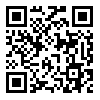Mon, Jun 30, 2025
| فارسی
1- Shahid Beheshti University, Tehran, Iran , p_nejat@sbu.ac.ir
2- Shahid Beheshti University, Tehran, Iran
2- Shahid Beheshti University, Tehran, Iran
Abstract: (266 Views)
One of the dimensions of cross-cultural difference is known as culture of honor in the literature, according to which familial purity and honor are highly valued. However, this cultural belief can predispose men to aggression especially in the face of honor violations. Accordingly, the purpose of this study was to examine the contribution of masculine honor beliefs to judgements of perpetrators and victims of honor aggression. Participants were 348 Iranians (68.7% female, mean age=27.74 years) who responded to four honor aggression scenarios as well as the Masculine Honor Beliefs Scale. After each scenario, moral judgement of victim’s and perpetrator’s acts, justifiability of the perpetrator’s act, and victim blame were assessed. To analyze data, multivariate multiple regression analysis was used in which demographics and masculine honor beliefs served as predictors while judgements of perpetrators and victims of honor aggression were designated as criterion variables. Masculine honor beliefs predicted immorality of the victim’s act, victim blame, and perpetrator justifiability in a positive, but immorality of the perpetrator’s act in a negative direction. Among demographic variables, religiosity predicted the four criterion variables in a similar direction to but independent from masculine honor beliefs. Present findings point to the pominent role of masculine honor beliefs, as a cultural value, in determining judgements of honor aggressions.
Type of Study: Research |
Subject:
Special
Received: 2024/02/29 | Revised: 2025/05/16 | Accepted: 2025/03/13 | ePublished ahead of print: 2025/05/16
Received: 2024/02/29 | Revised: 2025/05/16 | Accepted: 2025/03/13 | ePublished ahead of print: 2025/05/16
References
1. Baldry, A. C., Pagliaro, S., & Porcaro, C. (2013). The rule of law at time of masculine honor: Afghan police attitudes and intimate partner violence. Group Processes & Intergroup Relations, 16(3), 363-374. [DOI:10.1177/1368430212462492]
2. Benavidez, T. M., Neria, A. L., & Jones, D. N. (2016). The Bond That Breaks: Closeness and Honor Predict Morality-Related Aggression. Evolutionary Psychological Science, 2, 140-148. [DOI:10.1007/s40806-016-0044-x]
3. Brown, R. P. (2016). Honor bound: How a cultural ideal has shaped the American psyche. New York, NY: Oxford University Press.
4. Brown, R. P., Baughman, K., & Carvallo, M. (2018). Culture, masculine honor, and violence toward women. Personality and Social Psychology Bulletin, 44(4), 538-549. [DOI:10.1177/0146167217744195] [PMID]
5. Cohen, D. (1998). Culture, social organization, and patterns of violence. Journal of Personality and Social Psychology, 75, 408-419. [DOI:10.1037/0022-3514.75.2.408] [PMID]
6. Cohen, D., & Nisbett, R. E. (1994). Self-protection and the culture of honor: Explaining southern violence. Personality and Social Psychology Bulletin, 20(5), 551-567. [DOI:10.1177/0146167294205012]
7. Cohen, D., Nisbett, R. E., Bowdle, B. F., & Schwarz, N. (1996). Insult, aggression, and the southern culture of honor: An" experimental ethnography". Journal of Personality and Social Psychology, 70(5), 945-960. [DOI:10.1037/0022-3514.70.5.945] [PMID]
8. Dailey, J. D., & Singh, R. N. (2023, August 27). honor killing. Encyclopedia Britannica. https://www.britannica.com/topic/honor-killing
9. Gul, P., & Schuster, I. (2020). Judgments of marital rape as a function of honor culture, masculine reputation threat, and observer gender: A cross‐cultural comparison between Turkey, Germany, and the UK. Aggressive Behavior, 46(4), 341-353. [DOI:10.1002/ab.21893] [PMID] []
10. Karimi-Malekabadi, F., & Falahatpishe Baboli, M. (2023). Qeirat Values and Victim Blaming in Iran: The Mediating Effect of Culture-Specific Gender Roles. Journal of Interpersonal Violence, 38(3-4), 2485-2509. [DOI:10.1177/08862605221101184] [PMID]
11. Miles, J., & Shevlin, M. (2008). Applying Regression and Correlation: A Guide for Students and Researchers. A. Kiamanesh & M. Kabiri, Trans.). Jahad Daneshgahi (Allame Tabatabaei University). (Original work published 2001).
12. O'Dea, C. J., Chalman, S. T., Bueno, A. M. C., & Saucier, D. A. (2018). Conditional aggression: Perceptions of male violence in
13. response to threat and provocation. Personality and Individual Differences, 131, 132-141. [DOI:10.1016/j.paid.2018.04.029]
14. Öztemür, G., & Toplu-Demirtaş, E. (2023). Are the Paths to Victim-Blaming Paved with Hostile Sexism, Honor System Justification, and Fragile Masculinity? Evidence from Men in Turkey. Sexuality & Culture, 28, 168-186. [DOI:10.1007/s12119-023-10109-8]
15. Saucier, D. A., Stanford, A. J., Miller, S. S., Martens, A. L., Miller, A. K., Jones, T. L., & Burns, M. D. (2016). Masculine honor beliefs: Measurement and correlates. Personality and Individual Differences, 94, 7-15. [DOI:10.1016/j.paid.2015.12.049]
16. Saucier, D. A., Till, D. F., Miller, S. S., O'Dea, C. J., & Andres, E. (2015). Slurs against masculinity: Masculine honor beliefs and men's reactions to slurs. Language Sciences, 52, 108-120. [DOI:10.1016/j.langsci.2014.09.006]
17. Taylor, J. (2023, May 10). Combatting Gender-Based Violence - Pathfinder International. Pathfinder International. https://www.pathfinder.org/focus-areas/gender-based-violence/
18. Tiliopoulos, N., Bikker, A. P., Coxon, A. P., & Hawkin, P. K. (2007). The means and ends of religiosity: A fresh look at Gordon Allport's religious orientation dimensions. Personality and Individual differences, 42(8), 1609-1620. [DOI:10.1016/j.paid.2006.10.034]
19. Uskul, A. K., Cross, S. E., Günsoy, C., Gerçek‐Swing, B., Alözkan, C., & Ataca, B. (2015). A price to pay: Turkish and Northern American retaliation for threats to personal and family honor. Aggressive behavior, 41(6), 594-607. [DOI:10.1002/ab.21598] [PMID]
20. Vandello, J. A., & Cohen, D. (2003). Cultural themes associated with violence against women: A cross-cultural analysis. Unpublished manuscript, Princeton University.
Send email to the article author
| Rights and permissions | |
 |
This work is licensed under a Creative Commons Attribution-NonCommercial 4.0 International License. |




